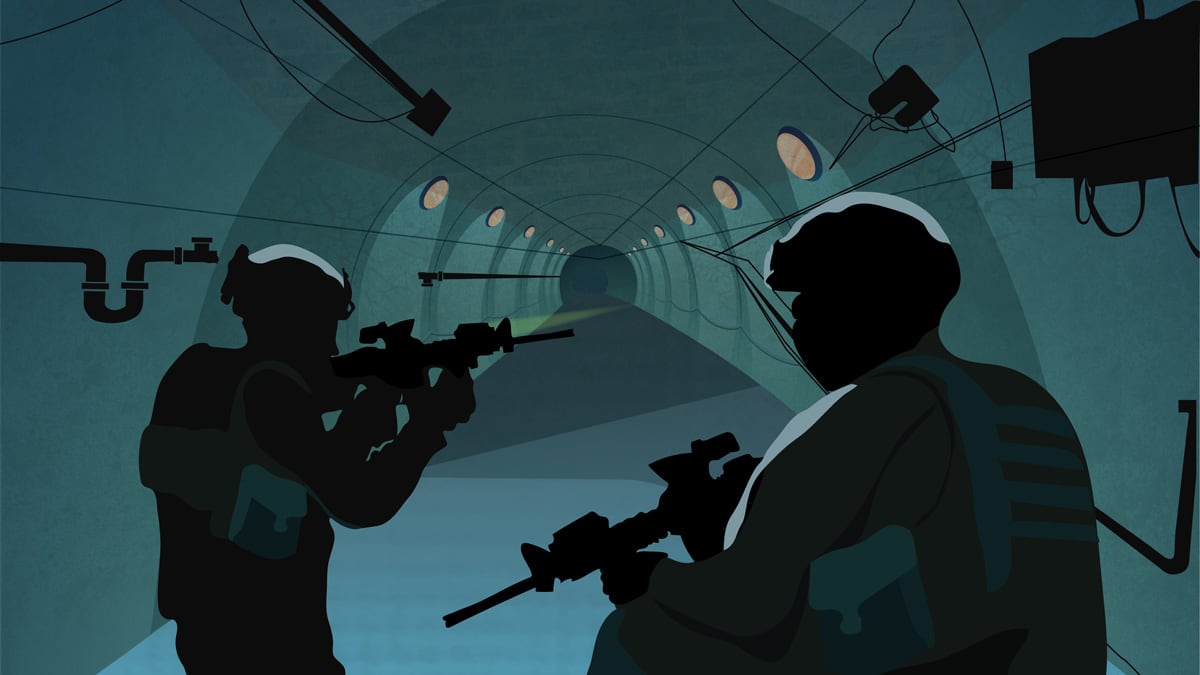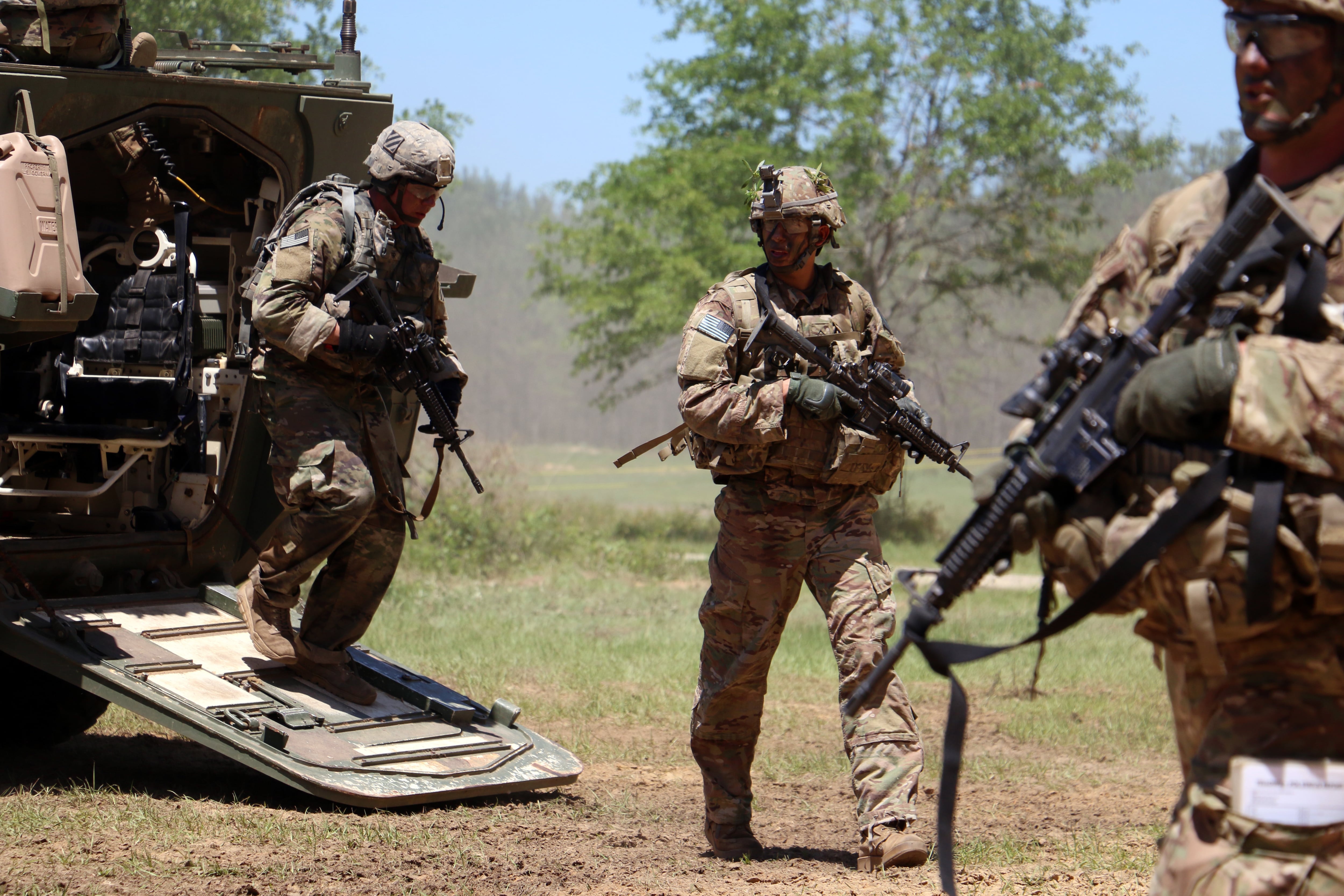This month two classes of future armor crewmen and scouts kick off extended One Station Unit Training in a pilot program similar to what the Army did a year ago with its infantry.
If approved, the training changes could become permanent this time next year, as they did for infantry following their pilot programs.
The effort doesn’t just lengthen their initial training, it adds driving time, vehicle identification time, vehicle maintenance time and puts soldiers in touch with all the platforms they might see. It also pushes them on increased standards for shooting both their individual and platform weapons, navigating on foot and mounted and meeting the same fitness standards as their infantry counterparts.
Col. Dawson Plummer, commander of the 194th Armor Brigade, laid out what’s happening with the armor OSUT pilot: two classes this month and the pilot beginning in November. What comes out of this evolution and others over the next year will inform the next waves of armor soldiers coming through that essential training.
RELATED

Infantry soldiers saw their OSUT pilot push training from 14 to 22 weeks and focused on improving fieldcraft, shooting, land navigation and other small unit and individual skills to make infantry more lethal.
Armor crewmen and scouts already had 16- and 17-week OSUT prior to this pilot launching, so the added six and five weeks was significant, but not as much as the eight extra weeks for infantry.
“Our focus will be more platform centric,” Plummer said in a briefing at Fort Benning during Georgia’s Maneuver Warfighter Conference in September.
For example, they’re adding 41 hours of vehicle troubleshooting and maintenance, a key task for armor crewmen. Soldiers currently do about seven hours of such training.
And those same crewmen will see nearly double the driving time as their predecessors.
The 19D scouts will get more real-world identification training that moves beyond just adversary standard military vehicles and adds in newer threats that are being put in theater now, Plummer said.
The class size has increased from 165 to 185, but they’ve also added instructors to keep the platform instruction ratio at 1:3, the colonel said.
Both crewmen and scouts will get more trigger time on their M4 carbines. But the crewman will also be firing their primary weapon, the pistol, more. Each will fire four daytime and two nighttime rounds on the 120mm.
More time driving
A big addition that Plummer said was needed is more off-road driving time.
Driving around in a parking lot for familiarization is one thing.
But moving from a wedge to a “V” formation in vehicles off road, “that’s different,” he said.
The 19D scouts will be doing more reconnaissance and security both on the platform and dismounted in their roles with the crew.
Those same scouts are going to get more hands-on work developing that reconnaissance into intelligence they can deliver up the chain to their commanders.
Which will include feeding it into the cyber or communication systems to get it up the chain.
And while they’re going to be graduating more proficient drivers in those armor crews, the other crew will be expected to do more weapon systems loading and scanning the area to help the vehicle commander find targets, navigate and use communication sets.
Multiple vehicles
Currently, armor soldiers are primarily trained on the platform they’ll most likely see once they get their unit assignment, for instance a Stryker with a Stryker BCT or a Bradley for an armored BCT.
But now, they’ll spend more time with the Stryker, Bradley and Humvee so they’re ready to go where they’re needed.
Plummer referenced a soldier headed to Fort Bliss, Texas, who might have had Stryker training but after the first year on station might get transferred to another BCT and have to jump into a Humvee or Bradley.
Now, they’ll have done training for each.
They are also looking to add self-recovery training for the Humvee, the colonel said.
On the tracked vehicle recovery side, the 107 hours of training devoted to that skill will result in a separate 26.5 hour “Recovery Operations Culminating Event,” before graduation, according to course documents.
That training will see tracked crews not just operating the M88 series vehicle but also rigging the boom, recovering a mired vehicle, a disabled vehicle and an overturned vehicle.
Todd South has written about crime, courts, government and the military for multiple publications since 2004 and was named a 2014 Pulitzer finalist for a co-written project on witness intimidation. Todd is a Marine veteran of the Iraq War.





